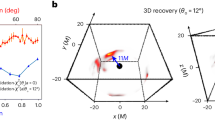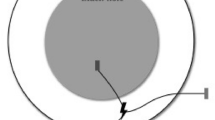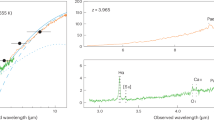Abstract
AMONG the exact solutions to Einstein's field equations of general relativity are those describing black holes which rotate and/or carry electric charge. These solutions are novel in that they may be analytically continued through the black hole interior in a time-like direction into a succession of asymptotically flat spacetime regions that are inaccessible in the spacetime region in which the black hole first formed. There has been speculation about whether matter could travel through such black holes into these ‘other universes’. As real black holes will never be precisely non-rotating and electrically neutral, it is of interest to determine whether such a transfer of matter from one universe to another is possible. If it were, it might imply the possibility of matter appearing explosively in our region of spacetime through white holes. The exact solutions of interest are suspect because they are idealised. For example, they exclude the effects of matter surrounding the hole, and quantum processes. It has been suggested1,2 that the interior of the idealised black hole might be smashed in a more realistic model by unbounded blue shift effects associated with classical matter falling along the so-called inner horizon. In this way the space bridge would be destroyed by back reaction of the gravitational field due to the energetic matter. Here we demonstrate that quantum vacuum effects, similar in origin to the attraction energy between two electrically neutral conducting plates (Casimir effect), also cause an unbounded back-reaction which would smash the idealised interior geometry, even if no actual matter were falling into the hole. We do not speculate whether other analytically extendible spactimes exist which these quantum processes leave topologically unmodified, but demonstrate that the models which have been explicitly advanced to date cannot be taken seriously as space bridges.
This is a preview of subscription content, access via your institution
Access options
Subscribe to this journal
Receive 51 print issues and online access
$199.00 per year
only $3.90 per issue
Buy this article
- Purchase on SpringerLink
- Instant access to full article PDF
Prices may be subject to local taxes which are calculated during checkout
Similar content being viewed by others
References
Simpson, M. & Penrose, R. Int. J. theor. Phys. 7, 183 (1973).
McNamara, J. M. Proc. R. Soc. (in the press).
Davies, P. C. W., Fulling, S. A. & Unruh, W. G. Phys. Rev. D 13, 2720 (1976).
Capper, D. M. & Duff, M. J. Nuovo Cimento 23 A, 173 (1974).
Deser, S., Duff, M. J. & Isham, C. J. Nucl. Phys. B 111, 45 (1976).
Brown, L. S. Phys. Rev. D 15, 1469 (1977).
Hawking, S. W. Preprint, Univ. of Cambridge (1977).
Bernard, C. & Duncan, A. Preprint, Univ. Columbia (1977).
Dowker, J. S. Preprint, Univ. Manchester (1977).
Christensen, S. M. & Fulling, S. A. Phys. Rev. D 15, 2088 (1977).
Hawking, S. W. Nature 248, 30 (1974).
Hiscock, W. A. Phys. Rev. D 15, 3054 (1977).
Rowan, D. J. J. Phys. A 10, 1105 (1977).
Author information
Authors and Affiliations
Rights and permissions
About this article
Cite this article
BIRRELL, N., DAVIES, P. On falling through a black hole into another universe. Nature 272, 35–37 (1978). https://doi.org/10.1038/272035a0
Received:
Accepted:
Issue date:
DOI: https://doi.org/10.1038/272035a0
This article is cited by
-
Singularities in 2D and 3D quantum black holes
Journal of High Energy Physics (2023)
-
Holographic probes of inner horizons
Journal of High Energy Physics (2020)
-
A simple quantum test for smooth horizons
Journal of High Energy Physics (2020)
-
The BTZ black hole violates strong cosmic censorship
Journal of High Energy Physics (2019)
-
Strong cosmic censorship: taking the rough with the smooth
Journal of High Energy Physics (2018)



